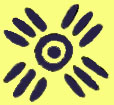
Many times I have been asked how I would describe my music and I have always found it to be very hard to answer. In essence, I consider my music to have a very personal style, and yet it does show affinities with the music of many Latin American composers. The latter is due not only to the fact that we have grown of the same rich musical traditions, but also to common love for folklore. Venezuelan folklore, my personal case, has many shades. It is the result of three interacting cultures: the Spanish tradition (which was in itself a melting pot), the black tradition brought by the African slaves, and the aboriginal Indian tradition. The first two of these traditions-curiously the two foreign cultures-are also the most explicitly represented in our folklore. Spain, as the colonizing power from which we inherited our language and religion, greatly influenced our folklore by establishing its musical system as the dominant force. Through the Spaniards we knew the harp and the guitar, and adapted those instruments to our local conditions and styles as they began to interact with other traditions. The African culture is present in our folklore not only through a wide variety of percussion instruments and rhythms, but also through its manifold social connotations as music is almost inseparable from dance and ritual.
This fusion has left a very colorful and rich musical language, which one can observe in dances such as the joropo, merenge, samba, cumbia, salsa, and many more that sprung out of it. These rhythms are the backbone of my music. I have been always very attracted to modes. In fact one could say that in my music there is a constant confrontation of dissonance and modality.
Pájaros de tres alas is in 5 distinctive sections A - B - A'- B'- C. The A section has driving rhythmical ostinato cells that create a tapestry of sound from which a theme is interwoven, dying to a transition leading to the B section, which also uses rhythmical figures to create layers of sound, in this case a slow hymn-like melody germinates through crescendos to a climax and end of the section when we are presented with a similar material as the beginning in the A' section but this time, even though the same driven rhythmical ostinato cells are present, they have been transformed and mutated to be much lighter and crispier versions of the same material, which once again winds down leading to B' which uses the same melody as in B but now stripped of any accompaniment and presented as a pure Gregorian-like chant. The C section bursts out of the quietness into a dance in 3/8 and it is in direct contrast with the other rhythmically binary sections. Although it uses some of the same material as in section A, the material is now molded into a ternary pulse, and some will say into the holistic rhythm of the Trinity.(1)
Instrumentation: For Full Orchestra . There is also a vesion for Wind Ensemble.
Duration: ca. 7:10
Pájaros de tres alas "Birds of three wings" - 1993 7:10 (one movement)
For Full Orchestra Parts Music Rental onlyFull score $30.00
Pájaros de tres alas. "Birds of three wings" - 1996 7:10 (one movement) Wind Ensemble Version. Full score & Set of Parts $200.00. Full score $30.00, Set of Parts $170.00







